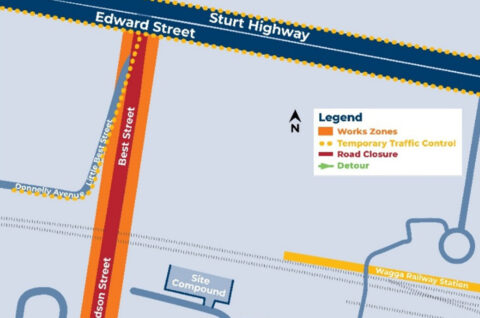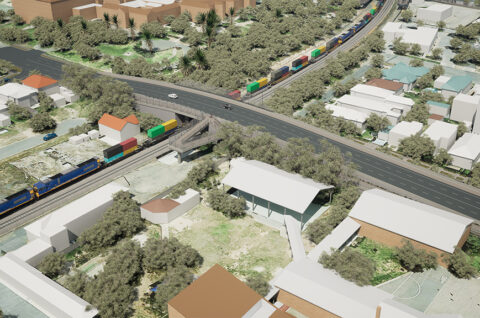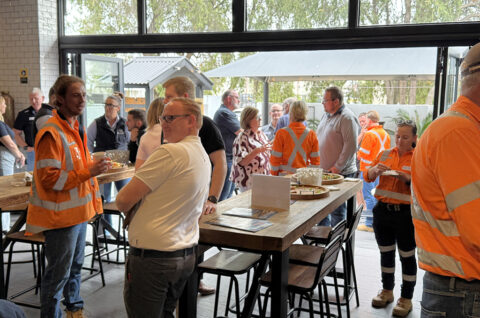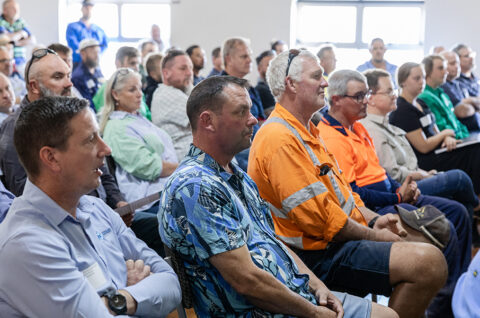Planning approval documents
Inland Rail has now received all primary environmental approvals from the NSW government to progress the Albury to Illabo section.
We have developed a range of documents for managing the design, construction and operation of the Albury to Illabo section.
Environmental Impact Statement
The Environmental Impact Statement (EIS) for Albury to Illabo was on public display in August and September 2022. During this time the community had the opportunity to make a submission about the project to the NSW Department of Planning, Housing and Infrastructure (DPHI) as part of its assessment of the project.
In April 2023, DPHI directed Inland Rail to provide a Preferred Infrastructure Report (PIR) that further assessed traffic and transport, noise and vibration, and air quality. The PIR was on public display in November 2023, with DPHI accepting further submissions.
In October 2024, the Albury to Illabo section received NSW Government approval after the Planning Minister approved the EIS and supporting documents.
State planning approval
The Albury to Illabo project was approved by DPHI in October 2024. The following documents support the state planning approval.
- DPHI Conditions of Approval of Inland Rail – Albury to Illabo
- DPHI Notice of Decision of Inland Rail – Albury to Illabo
Further project applications and documents are available on the NSW Government’s Major Projects website.
Environment protection licence (EPL)
- Environmental Protection Licence issued to Martinus Rail by the NSW Environment Protection Authority
- Environment Protection Licence 21984 – Premise Maps
Sustainability policy
Inland Rail is committed to working sustainably on all projects along the alignment, as outlined in the Environment and Sustainability Policy. As such, we require our contractors to make the same commitment.
Technical reports
The EIS outlines how the Albury to Illabo section will impact the environment and how the impacts will be avoided, minimised or offset.
This report documents and considers the issues raised in community, government agencies, organisations and other submissions received by DPHI during public exhibition of the EIS
This report documents further assessed traffic and transport, noise and vibration, and air quality. It considers changes to the exhibited proposal that have arisen as a consequence of these further assessments and related submissions.
This report documents and considers the issues raised in community, government agencies, organisations and other submissions received by DPHI during public exhibition of the PIR.
This report provides an assessment of biodiversity values of the subject land for the Inland Rail Albury to Illabo proposal.
This document provides Inland Rail’s response to DPHI’s request for additional information on air quality matters.
These reports provide an assessment of biodiversity values of the subject land for the Inland Rail Albury to Illabo proposal.
Project Delivery Plans and Assessments
- Heritage Interpretation Plan
- Sustainability Management Plan
- Employee Code of Conduct – Martinus
- Construction Noise and Vibration Impact Statement – Table Top Yard Clearances
- Construction Noise and Vibration Impact Statement – The Rock Yard Clearances
- Construction Noise and Vibration Impact Statement – Harefield Yard Clearances
- Construction Noise and Vibration Impact Statement – Junee to Illabo
- Construction Noise and Vibration Impact Statement – Wagga Wagga Utility Work
- Construction Environmental Management Framework [PDF 1.98 MB]
- Construction Environmental Management Plan – Stage A
- Construction Soil and Water Management Plan – Stage A
- Construction Noise and Vibration Management Plan – Stage A
- Construction Biodiversity Management Plan – Stage A
- Construction Cultural Heritage Management Plan – Stage A
- Flooding and Bushfire Emergency Management Plan – Stage A
- Construction Waste Contamination and Hazardous Materials Management Plan – Stage A
- Inland Rail Code of Conduct
- Staging Report
- Water Reuse Strategy
- Pollution Incident Response Management Plan
- Construction Traffic, Transport and Access Management Plan – Stage A
- Precinct Traffic Management Sub Plan – Stage A – Wagga Wagga
- Precinct Traffic Management Sub Plan – Stage A – Junee LGA General
- Construction Noise and Vibration Impact Statement – Junee Yard Precinct
- Construction Noise and Vibration Impact Statement- Olympic Highway Underbridge
- Social Impact Management Plan
Independent environmental audit
These documents report results of independent environmental audits conducted on the Albury to Illabo section.
Secondary Approvals
-
- Low Impact Work Assessment
- General Investigations Low Impact Works
- General Investigations, Low Impact Work Assessment
- Low Impact Works Application – Edmondson Street
- Low Impact Works Application – Junee to Illabo clearances
- Minor Ancillary Facility Assessment – Junee to Illabo Clearances
- Minor Ancillary Facility Assessment – Edmondson Street bridge
- EIS Consistency Assessment Report (Minor) – Edmondson Street Utility Adjustment
- EIS Consistency Assessment Report (Minor) – Kildare Catholic College
- EIS Consistency Assessment (Minor) Cassidy Parade and Pearson Street Utility Adjustments
- Junee to Illabo Consistency Assessment (PDF 30MB)
- Billy Hughes Bridge Construction Noise and Vibration Impact Statement (PDF 5MB)
- Olympic Highway Underbridge Construction Noise and Vibration Impact Statement (PDF 17MB)
- Low Impact Work Approval Pavement Cores (PDF 35MB)
- Junee Yard Precinct Construction Noise and Vibration Impact Statement (PDF 22MB)
- Henty Yard Clearances Construction Noise and Vibration Impact Statement (PDF 13MB)
- Yerong Creek Construction Noise and Vibration Impact Statement (PDF 6MB)
- Flood Design Report – The Rock Yard (PDF 36MB)
- Flood Design Report – Culcairn Yard (PDF 128MB)
Communication strategy and engagement
This document outlines our approach to working with the community and how we will manage and respond to any enquiries or complaints that we receive, as we build the Albury to Illabo section of Inland Rail.
This document describes how the project will identify and engage with key stakeholders during construction, and how the project will receive community feedback and keep the community informed of construction progress.
